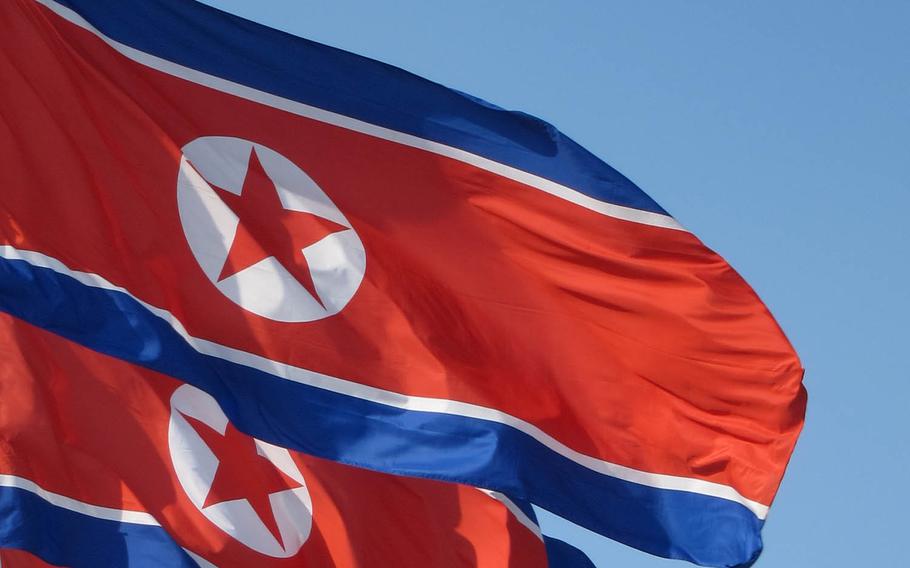
The Transitional Justice Working Group has released a report documenting 323 sites of state-sanctioned killings as reported by North Korean defectors. (Courtesy of Wikicommons)
SEOUL, South Korea — Upping the ante over stalled nuclear talks, North Korea test-fired two new ballistic missiles into the sea off its eastern coast on Thursday, South Korea said as it expressed “strong concern.”
It was the first launch since President Donald Trump and North Korean leader Kim Jong Un agreed to resume working-level negotiations that the United States hopes will persuade the communist state to abandon its nuclear weapons.
Earlier this month, the North warned it may restart testing in its nuclear weapons program amid its frustration over the deadlock and anger over joint U.S.-South Korean military exercises expected to take place next month.
Kim also was shown inspecting a new submarine in photos released Wednesday on state-run media.
North Korea fired the missiles about 20 minutes apart from the Hodo peninsula north of Wonsan, which has been the site of past launches into the sea, the military said, adding that the first one flew about 260 miles and the second more than 428 miles.
The missiles, which were presumed to have been launched from a truck known as a transporter erector launcher, both reached an altitude of some 32 miles, according to the South’s Joint Chiefs of Staff.
Details trickled out throughout the day. On Thursday afternoon, President Moon Jae-in’s national security council issued a statement saying its initial analysis shows the projectiles were “a new type of short-range ballistic missile.”
It promised a final judgment after a detailed joint assessment with the United States.
“The committee expressed strong concern that such actions by North Korea are not helpful to the efforts of alleviating military tensions on the Korean Peninsula,” the statement said.
North Korea also fired two short-range missiles along with multiple rocket launcher systems in early May. Kim agreed to suspend nuclear and long-range missile tests last year as diplomacy gained momentum. He didn’t say anything about short-range missiles, although all ballistic missile activity is banned under U.N. Security Council resolutions that impose economic sanctions against the North.
Trump expressed little concern about the May launch. He also met with Kim about two months later in an impromptu encounter in the truce village on the heavily fortified border that divides the Korean Peninsula.
Trump said the two leaders agreed to resume working-level negotiations to break the deadlock that followed their February summit in Vietnam, which collapsed without an agreement due to sharp differences over sanctions relief. But no date has been set.
Melissa Hanham, deputy director of the Open Nuclear Network program, said the missiles fired Thursday fit the same profile as those launched in May, which appeared to be a version of Russia’s Iskander missile. The missiles were likely solid-fuel and nuclear-capable and could threaten large populations as well as U.S. forces stationed in South Korea, she said in a telephone interview.
“Short-range missiles like these have a lot of advantages for North Korea because they can be moved around easily and they’re harder to monitor,” she said.
Experts also have noted the relatively low altitude of the missiles could also be designed to evade detection by an advanced U.S. defense battery known as THAAD, which is positioned in a rural area southeast of Seoul.
North Korea has a track record of staging provocations by demonstrating its continued military capabilities in a bid to gain leverage in talks.
“The Kim regime likely times these tests for international signaling purposes, applying political pressure on the U.S. and South Korea in an effort to get more for less in future negotiations,” said Leif-Eric Easley, associate professor of international studies at Ewha Womans University in Seoul.
The latest launch came on the heels of a visit to South Korea by U.S. National Security Adviser John Bolton, who is hated by the North Koreans. It also deals a challenge to the Defense Secretary Mark Esper, who was sworn in Tuesday, seven months after the post was vacated by Jim Mattis, who resigned.
The North also has expressed strong objections to plans by the United States and South Korea to hold joint exercises in coming weeks despite efforts by the allies to scale them down in size and lower their profile.
Japan’s Defense Minister Takeshi Iwaya said the missile test on Thursday was probably a violation of UNSC resolutions.
“If they were ballistic missiles, they violate U.N. sanctions, and I find it extremely regrettable,” he was quoted as saying.
gamel.kim@stripes.com Twitter: @kimgamel